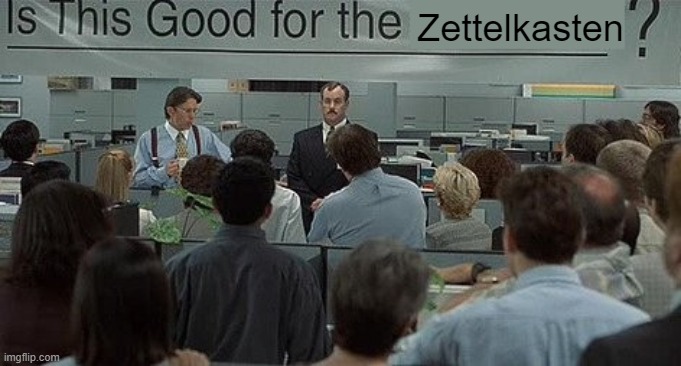Most people born since the advent of the filing cabinet and the computer have spent a lifetime using a hierarchical folder-based mental model for their knowledge. For greater value and efficiency one needs to get away from this model and move toward linking individual ideas together in ways that they can more easily be re-used.
To accomplish this many people use an index-based method that uses topical or subject headings which can be useful. However after even a few years of utilizing a generic tag (science for example) it may become overwhelmed and generally useless in a broad search. Even switching to narrower sub-headings (physics, biology, chemistry) may show the same effect. As a result one will increasingly need to spend time and effort to maintain and work at this sort of taxonomical system.
The better option is to directly link related ideas to each other. Each atomic idea will have a much more limited set of links to other ideas which will create a much more valuable set of interlinks for later use. Limiting your links at this level will be incredibly more useful over time.
One of the biggest benefits of the physical system used by Niklas Luhmann was that each card was required to be placed next to at least one card in a branching tree of knowledge (or a whole new branch had to be created.) Though he often noted links to other atomic ideas there was at least a minimum link of one on every idea in the system.
For those who have difficulty deciding where to place a new idea within their system, it can certainly be helpful to add a few broad keywords of the type one might put into an index. This may help you in linking your individual ideas as you can do a search of one or more of your keywords to narrow down the existing ones within your collection. This may help you link your new idea to one or more of those already in your system. This method may be even more useful and helpful for those who are starting out and have fewer than 500-1000 notes in their system and have even less to link their new atomic ideas
to.
For those who have graphical systems, it may be helpful to look for one or two individual "tags" in a graph structure to visually see the number of first degree notes that link to them as a means of creating links between atomic ideas.
To have a better idea of a hierarchy of value within these ideas, it may help to have some names and delineate this hierarchy of potential links. Perhaps we might borrow some well ideas from library and information science to guide us? There's a system in library science that uses a hierarchical set up using the phrases: "broader terms", "narrower terms", "related terms", and "used for" (think alias or also known as) for cataloging books and related materials.
We might try using tags or index-like links in each of these levels to become more specific, but let's append "connected atomic ideas" to the bottom of the list.
Here's an example:
- broader terms (BT): [[physics]]
- narrower terms (NT): [[mechanics]], [[dynamics]]
- related terms (RT): [[acceleration]], [[velocity]]
- used for (UF) or aliases:
- connected atomic ideas: [[force = mass * acceleration]],
[[$$v^2=v_0^2+2aΔx$$]]
Chances are that within a particular text, one's notes may connect and interrelate to each other quite easily, but it's important to also link those ideas to other ideas that are already in your pre-existing body of knowledge.
See also: Thesaurus for Graphic Materials I: Subject Terms (TGM I) https://www.loc.gov/rr/print/tgm1/ic.html

